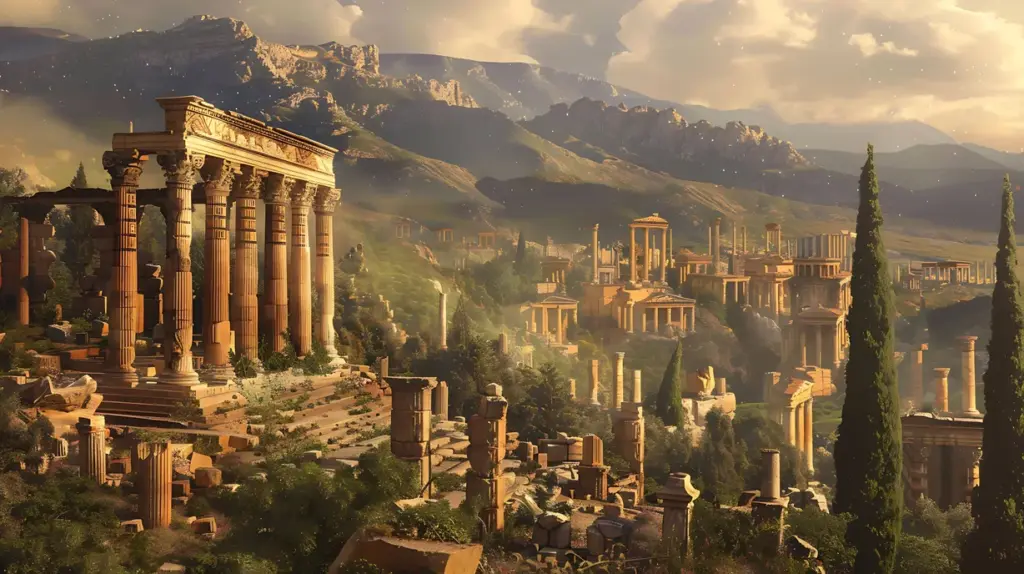The Majestic Mount Vesuvius: A Journey Through History and Adventure in Naples
Introduction to Mount Vesuvius
Mount Vesuvius is one of the most famous and active volcanoes in the world, located in the Campania region of Italy near the bustling city of Naples. Its notoriety stems from the catastrophic eruption in AD 79 that buried the Roman cities of Pompeii and Herculaneum. This ancient disaster left an indelible mark on history, as well as a treasure trove of archaeological finds that continue to draw millions of tourists each year.
Visiting Mount Vesuvius is more than just witnessing a natural wonder; it’s an adventure through time, showcasing the resilience of nature and the fragility of human existence. Whether you’re an avid historian, a nature enthusiast, or simply looking for an unforgettable travel experience, Mount Vesuvius offers something for everyone.
The Geological Marvel of Mount Vesuvius
Mount Vesuvius stands at about 1,281 meters high, with its semi-circular ridge, Monte Somma, surrounding it. The volcano is part of the Campanian volcanic arc, which is known for its complex and volatile geology. The structure of Vesuvius has been shaped by numerous eruptions over millennia, making it a fascinating subject for geologists and volcanologists worldwide.
The crater, approximately 700 meters in diameter, offers awe-inspiring views and the opportunity to witness fumaroles releasing steam from the Earth’s core. The experience is both humbling and exhilarating, providing a stark reminder of the Earth’s raw power. For those interested in geology, the numerous layers of lava, tephra, and ash deposits provide a visible history of Vesuvius’s activity over thousands of years.
Historical Significance: The 79 AD Eruption
The eruption of Vesuvius in AD 79 is perhaps the most documented and studied volcanic event in history. The sudden violence of the eruption caught the inhabitants of Pompeii and Herculaneum off guard, enshrining these cities in a time capsule of ash and pumice. The tragic events were chronicled by Pliny the Younger, whose letters to the historian Tacitus provide a detailed eyewitness account.
Archaeological excavations have unearthed incredibly well-preserved artifacts, buildings, and even casts of victims, offering an unparalleled glimpse into daily life in ancient Rome. Visitors to the site can walk through the streets of Pompeii, explore the remains of luxurious villas, and marvel at frescoes that have retained their color and detail. The preservation of organic materials, such as wooden doors and food items, adds another layer of depth to this historical exploration.
Visiting Pompeii and Herculaneum
A trip to Mount Vesuvius is incomplete without visiting the archaeological sites of Pompeii and Herculaneum. Pompeii, a UNESCO World Heritage Site, is the larger of the two and attracts more visitors. The city’s layout is well-organized, with public buildings, shops, baths, and private homes providing a comprehensive view of Roman urban planning and architecture.
Herculaneum, although smaller, offers a more intimate experience. The city was better preserved due to the nature of the volcanic material that buried it, allowing for the survival of wooden structures and even papyrus scrolls. The houses in Herculaneum are richly decorated, and the streets are remarkably well-preserved, giving visitors a more vivid sense of ancient Roman life.
The Climb to Mount Vesuvius Crater
For the adventurous traveler, hiking to the crater of Mount Vesuvius is a must-do activity. The trail to the summit is accessible and well-maintained, though it can be steep in sections. The climb typically takes about 30 minutes to an hour, depending on your pace and fitness level. Along the way, informative signs provide details about the volcano’s history and geology.
As you ascend, the panoramic views of the Bay of Naples and the surrounding landscapes become increasingly breathtaking. Upon reaching the summit, you can peer into the crater’s depths and walk along its rim, feeling the heat emanating from the Earth’s interior. On clear days, the view extends to the islands of Capri, Ischia, and beyond, making the effort of the climb well worth it.
Safety and Accessibility
Visiting an active volcano requires some precautions, but Mount Vesuvius is one of the most monitored volcanoes in the world. The Vesuvius Observatory and various monitoring stations ensure that any signs of increased activity are detected early, providing ample warning for visitors and residents. The park is managed with safety in mind, offering guided tours and clear signage to keep visitors informed and secure.
Accessibility to Mount Vesuvius has been improved significantly in recent years. Shuttle buses run regularly from Naples and nearby towns to the trailhead, and there is ample parking for those driving. Guided tours are available for those who prefer a more structured experience, often including transportation, entry fees, and expert guides who provide insights into the volcano’s history and characteristics.
Flora and Fauna Around Vesuvius
The fertile volcanic soil around Mount Vesuvius supports a diverse range of plant life, making the lower slopes verdant with vineyards, orchards, and forests. The region is famous for its grape varietals, used to produce the renowned Lacryma Christi wine. Local farms also grow fruits such as apricots, cherries, and figs, contributing to the area’s rich agricultural heritage.
Wildlife enthusiasts will find plenty to marvel at as well. The National Park of Vesuvius is home to various bird species, including peregrine falcons, kestrels, and owls. Small mammals, reptiles, and a host of insects thrive in this unique ecosystem. Seasonal wildflowers add a splash of color to the landscape, making it a beautiful and photogenic spot year-round.
Experiencing the Local Culture
The towns and villages surrounding Mount Vesuvius are steeped in culture and tradition. Naples, in particular, is a city bursting with life, offering a vibrant mix of history, art, and cuisine. The local Neapolitan cuisine is a highlight for many visitors, with dishes like pizza margherita, pasta e fagioli, and sfogliatella pastries being must-tries.
Local markets, festivals, and artisan shops provide a taste of authentic Italian life. Strolling through the historic center of Naples, a UNESCO World Heritage Site, reveals stunning churches, lively piazzas, and bustling street life. The spirit of the people, their hospitality, and their passion for their heritage make visiting this region an enriching experience.
Practical Tips for Travelers
When planning your trip to Mount Vesuvius, consider visiting during the spring or fall when the weather is mild and the landscapes are lush. Summer can be hot, but it’s also a popular time for festivals and events. Winter visits are less crowded, but some facilities may be closed or have reduced hours.
Wear comfortable walking shoes for the hike to the crater, and bring plenty of water, sunscreen, and a hat for sun protection. English is widely spoken in tourist areas, but learning a few basic Italian phrases can enhance your experience and endear you to the locals. Booking tours and tickets in advance can save time and ensure you get the most out of your visit.
Conclusion: The Timeless Allure of Mount Vesuvius
Mount Vesuvius is a destination that melds natural beauty with historical intrigue, offering travelers a unique and unforgettable experience. Its commanding presence over the Bay of Naples is a constant reminder of the dynamic forces that shape our world. The combination of adventure, education, and cultural richness makes it a must-visit location for anyone looking to explore the wonders of Italy.
By visiting Mount Vesuvius, you are not just witnessing a geographical landmark; you are stepping into a story that has been unfolding for thousands of years. This blend of past and present, natural marvel and human endeavor, makes every trip to Vesuvius a timeless adventure.



